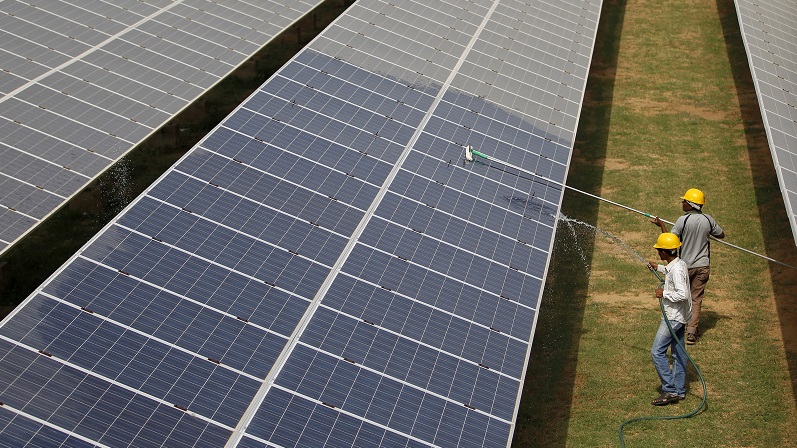The World Bank, under pressure to do more to help developing countries cope with climate change, may change its internal lending guidelines to free up $4 billion in lending capacity each year, World Bank President David Malpass said on Thursday.
Malpass said the bank’s International Bank for Reconstruction and Development (IBRD) arm may lower its equity-to-lending ratio by one percentage point to 19%.
This means the bank will take on a bit more risk, in line with an independent report prepared for the Group of 20 (G20) major economies last year.
One of the bank’s main focuses is reducing greenhouse gas emissions and helping countries adapt to climate change.
An ongoing reform process is making this mission more central to how the bank spends money.
Lowering the equity-to-lending ratio would free up more resources at a time of mounting global challenges such as the Ukraine war, Malpass said.
The bank’s board, made up of governors picked by its member states, is expected to decide on the issue by the April meetings of the bank and the International Monetary Fund.
The IBRD in December raised its sustainable annual lending limit by $2 billion, beginning in June 2023, and Malpass said there could be scope for a further 8% expansion in total IBRD lending. Its lending ceiling for fiscal 2022 was $37.5 billion.
Malpass announced his resignation from the bank on Wednesday amid mounting pressure from the U.S. Treasury to move faster on reforming the bank. He told Reuters on Thursday in his first interview since announcing his departure that the bank’s work on its “evolution roadmap” was far along.
The bank’s management has already vetted the 19% proposal with credit ratings agencies, and that was the most likely outcome of the discussions now underway, said a source familiar with the matter.
The World Bank had long argued against changing its capital adequacy rules, worried that doing so would undermine its AAA credit ratings, but two of the three main agencies last year said some changes were possible without tarnishing the ratings.
The bank’s board met on Thursday to discuss the proposal and other options, a second source said. “We recognize it could be lowered in a financially sustainable manner,” the source said.
World Bank chief to step down early after climate controversy
The United States, the bank’s largest shareholder, had no immediate comment on the proposed ratio change, but has been pushing the bank for months to take bolder and quick steps to free up urgently needed resources.
Changing the bank’s current ratio is one of many recommendations contained in last year’s independent report prepared for the G20, which concluded that the World Bank and other multilateral development bank could increase their lending capacity by several hundreds of billions of dollar by reforming the way they operate.
Kevin Gallagher, who heads Boston University’s Global Development Policy Center, said the proposal under discussion marked progress after years of resistance by the World Bank but further changes and a capital increase would be needed.
“It’s an important step in the right direction, but it’s only $4 billion of the hundreds of billions of dollars that G20 says can be stretched to meet our shared climate goals,” he said. “If this is all they do, then it’s a failure.”
Developing countries need to secure $1 trillion a year in external financing for climate action by the end of the decade and match that with their own funds, in order to cut emissions, boost resilience, deal with damage from climate change and restore nature and land, a report concluded last year.
